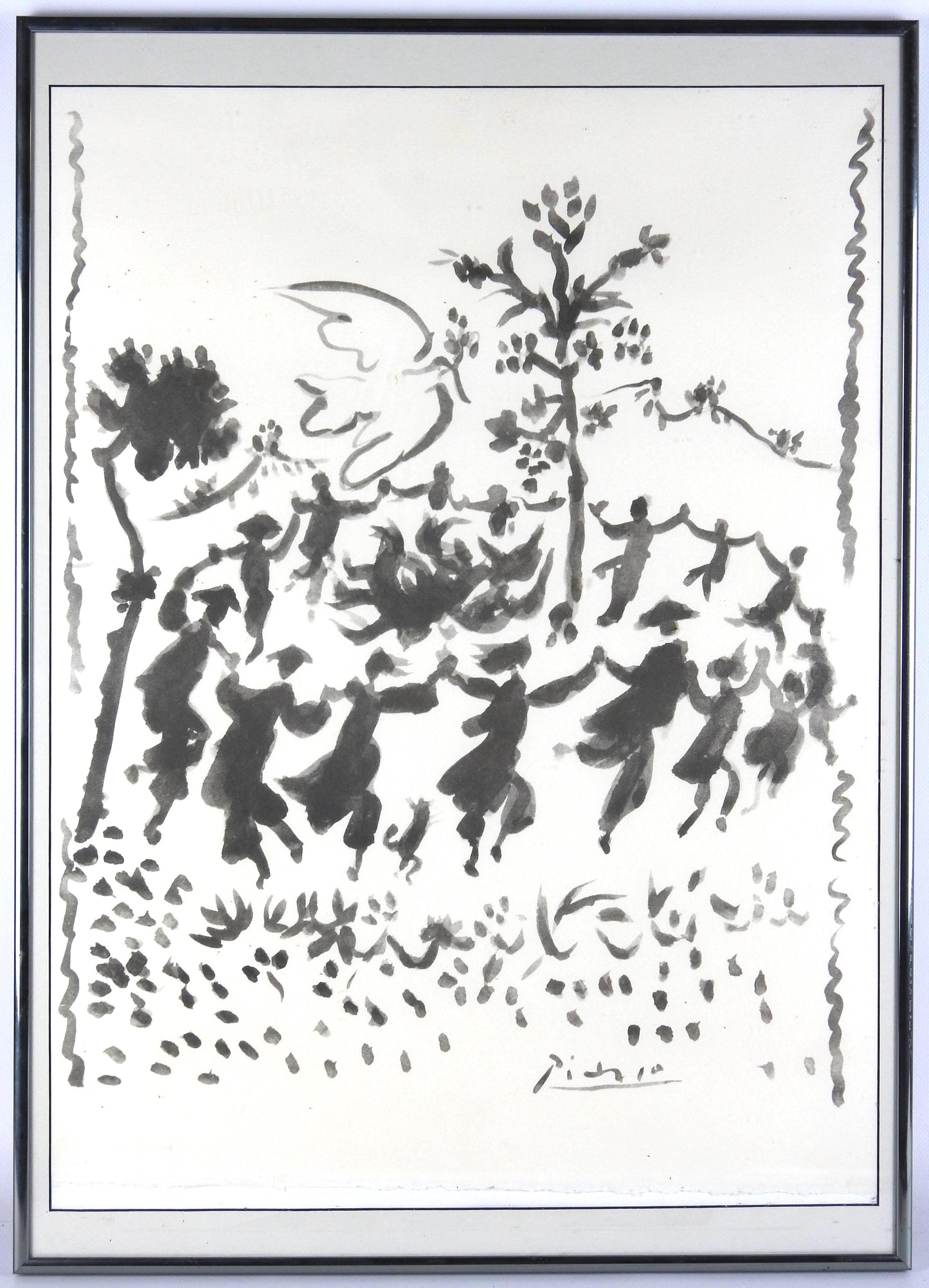Pablo Picasso
Pablo Picasso, Danse pour la Paix. Lithography
Pablo Picasso, Danse pour la Paix. Lithography
Couldn't load pickup availability
Pablo Picasso (1881-1973), after Danse pour la Paix. Lithography
Measures: 58 x 48 cm
Sealed certified
Pablo Picasso, born in Málaga, Spain, was one of the most influential and revolutionary artists of the 20th century. His career spanned more than seven decades, during which he co-founded Cubism, pioneered collage techniques, and played a key role in the evolution of modern art.
By 1907, Picasso and Georges Braque developed Cubism, breaking traditional artistic norms by fragmenting objects into geometric shapes and introducing multiple perspectives within a single composition.
His works are displayed in the world’s greatest museums, including the Musée Picasso (Paris), The Museum of Modern Art (MoMA, New York), and the Prado Museum (Madrid).
Danse pour la Paix (“Dance for Peace”) is a vibrant lithograph associated with Pablo Picasso’s longstanding artistic advocacy for peace, joy, and human unity — themes that became central to his work after the Second World War.
Rendered with the master’s characteristic economy of line, the composition captures figures in motion, their gestures woven together in a moment of liberated, almost celebratory harmony. The scene evokes the universal idea that movement, art, and shared cultural expression can transcend conflict — a message Picasso repeatedly conveyed through his drawings, posters, and lithographs for peace-related causes.
The title reflects Picasso’s deep involvement with the international peace movement, especially from the late 1940s onward, when he became a symbolic voice for artistic humanism. He famously created the Dove of Peace in 1949 for the World Peace Congress, and later contributed numerous drawings and lithographs to peace committees, humanitarian exhibitions, and cultural events promoting reconciliation.
Works featuring dancers, lovers, families, and joyful gatherings were often used in this context, as Picasso believed that peace was not only political but also cultural — expressed through vitality, rhythm, and the human body in motion.
While Danse pour la Paix does not refer to a single, unique event, the title is consistent with the spirit of the many artworks Picasso produced for peace-oriented exhibitions and editions, especially during the 1950s–1960s, when such imagery was reproduced widely in portfolios and lithographic collections.
✅ Authenticity Guaranteed — Certified by Swiss experts
✅ Trusted Provenance
✅ Secure and encrypted payments with our leading Swiss partner Worldline
Share








